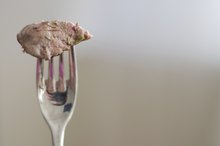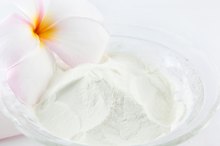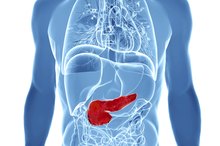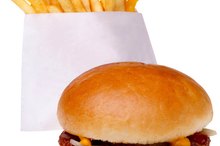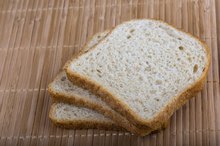What does fact checked mean?
At Healthfully, we strive to deliver objective content that is accurate and up-to-date. Our team periodically reviews articles in order to ensure content quality. The sources cited below consist of evidence from peer-reviewed journals, prominent medical organizations, academic associations, and government data.
The information contained on this site is for informational purposes only, and should not be used as a substitute for the advice of a professional health care provider. Please check with the appropriate physician regarding health questions and concerns. Although we strive to deliver accurate and up-to-date information, no guarantee to that effect is made.
The process of digestion depends on the synchronized teamwork of organs, specialized mucosa, glands and muscles. Each feature of the digestive tract plays a role in the breakdown of the food you eat into a form that your body can use as nourishment. The distinctions in the molecular structure of carbohydrates, proteins and fats are the reason for variations in the digestive breakdown of these nutrients.
If you are experiencing serious medical symptoms, seek emergency treatment immediately.
Initial Phase of Digestion
The initial phase of the digestion begins in your mouth. Your mouth, like your stomach and small intestine, is a hollow digestive organ with a special lining called the mucosa. The oral mucosa contains tiny glands that produce digestive juices. Your teeth mechanically break down food into smaller particles. Your salivary glands, which are located near your mouth, secrete saliva, which chemically breaks down the smaller particles of food. The chewed food mixes with saliva and forms a mass which is referred to as a bolus. The hollow organs of the digestive system are also lined with smooth muscles that enable the organ walls to move in a wavelike motion. This muscle action is called peristalsis. These features of the upper digestive tract work together to propel the bolus from your mouth, through your pharynx, over your epiglottis and into your esophagus.
- The initial phase of the digestion begins in your mouth.
- Your mouth, like your stomach and small intestine, is a hollow digestive organ with a special lining called the mucosa.
Pepsin and Protein Digestion in the Stomach
What Digestive Functions Occur in the Mouth?
Learn More
Once the bolus passes your lower esophageal sphincter, it enters your stomach. The glands in the lining of the stomach produce secretions called gastric juices. Michael J. Gregory, PhD, a faculty member of Clinton Community College, explains that at the sight of food, your brain stimulates the endocrine cells in your stomach to secrete the hormone called gastrin. Gastrin activates your stomach to secrete gastric juices. The presence of gastrin causes the stomach mucosa to produce pepsinogen. Hydrochloric acid converts pepsinogen to pepsin 2. Pepsin is an enzyme that breaks down proteins to peptides 2. In this simpler form, proteins can be absorbed through the small intestines.
- Once the bolus passes your lower esophageal sphincter, it enters your stomach.
- The presence of gastrin causes the stomach mucosa to produce pepsinogen.
Role of Protease in Protein Digestion
The glands in your stomach lining also secrete the digestive enzyme called protease. Protease is vital in the digestive breakdown of proteins. Proteins are one of nature’s most complex organic compounds. Nitrogen containing compounds called amino acids comprised proteins. Hydrochloric acid and protease break the large intact proteins into amino acids, which can now be absorbed through the small intestine.
- The glands in your stomach lining also secrete the digestive enzyme called protease.
- Hydrochloric acid and protease break the large intact proteins into amino acids, which can now be absorbed through the small intestine.
Protein Digestion and Absorption in the Small Intestine
Steps of Food Digestion
Learn More
The muscles in your stomach wall then move the food into the duodenum, which is the first part of the small intestine. The duodenum and pancreas continue the digestive breakdown of proteins with the aid of another enzyme called trypsin. The intestinal mucosa secretes yet another enzyme called peptidase, which completes the digestion of peptides to amino acids. The small intestine absorbs the amino acids, thus allowing them to enter the bloodstream. From here, your body can reassemble these amino acids into new proteins needed for cell function.
- The muscles in your stomach wall then move the food into the duodenum, which is the first part of the small intestine.
- The intestinal mucosa secretes yet another enzyme called peptidase, which completes the digestion of peptides to amino acids.
Related Articles
References
- NYU Langone Medical Center: Proteolytic Enzymes
- Encyclopedia Britannica: Pepsin
- Willet SG, Mills JC. Stomach organ and cell lineage differentiation: from embryogenesis to adult homeostasis. Cell Mol Gastroenterol Hepatol. 2016;2(5):546-559. doi:10.1016/j.jcmgh.2016.05.006
- Gropper SS, Smith JL, Groff JL. Advanced Nutrition and Human Metabolism. 6th ed. Belmont, CA: Wadsworth Publishing Company; 2013.
- Smolin LA, Grosvenor, MB. Nutrition: Science and Applications. 4th ed. Hoboken, NJ: Wiley Publishing Company; 2016.
- Wallace M. Your Digestive System and How It Works. National Institute of Diabetes and Digestive and Kidney Diseases (NIDDK). 2013.
Writer Bio
Maryann Gromisch is a registered nurse and a freelance writer. She has clinical experience in medical, surgical and critical care nursing. Since October 2009 she has written articles related to the digestive system for Empowher.com, a women's health online magazine. She has a bachelor's degree in nursing from Southern Connecticut State University, New Haven.



